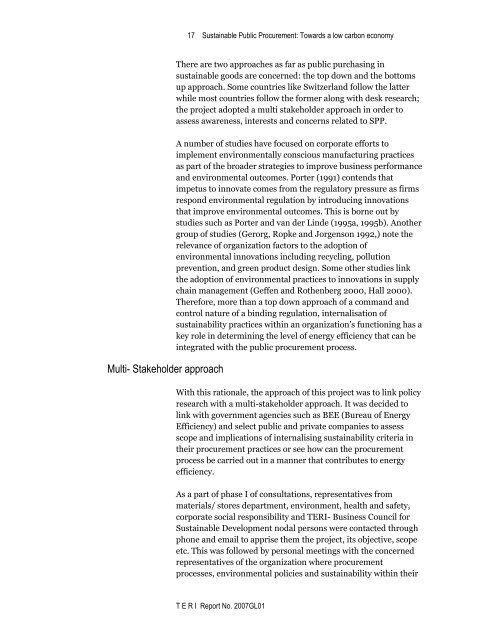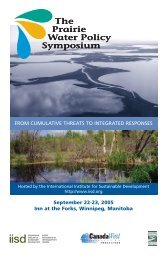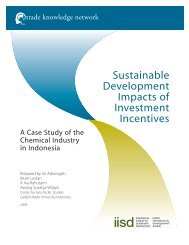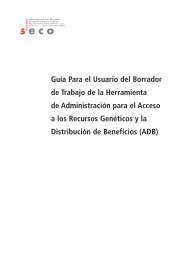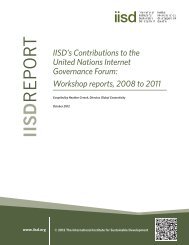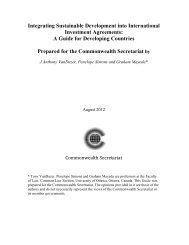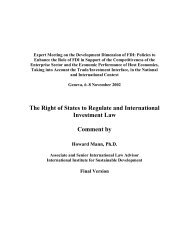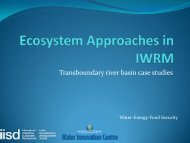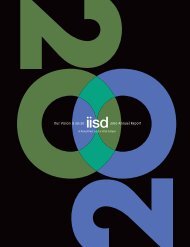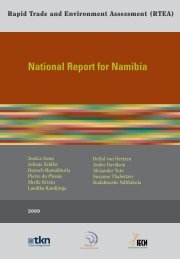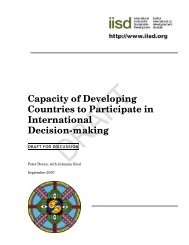Sustainable Public Procurement: Towards a lowâcarbon economy
Sustainable Public Procurement: Towards a lowâcarbon economy
Sustainable Public Procurement: Towards a lowâcarbon economy
You also want an ePaper? Increase the reach of your titles
YUMPU automatically turns print PDFs into web optimized ePapers that Google loves.
17 <strong>Sustainable</strong> <strong>Public</strong> <strong>Procurement</strong>: <strong>Towards</strong> a low carbon <strong>economy</strong><br />
Multi- Stakeholder approach<br />
There are two approaches as far as public purchasing in<br />
sustainable goods are concerned: the top down and the bottoms<br />
up approach. Some countries like Switzerland follow the latter<br />
while most countries follow the former along with desk research;<br />
the project adopted a multi stakeholder approach in order to<br />
assess awareness, interests and concerns related to SPP.<br />
A number of studies have focused on corporate efforts to<br />
implement environmentally conscious manufacturing practices<br />
as part of the broader strategies to improve business performance<br />
and environmental outcomes. Porter (1991) contends that<br />
impetus to innovate comes from the regulatory pressure as firms<br />
respond environmental regulation by introducing innovations<br />
that improve environmental outcomes. This is borne out by<br />
studies such as Porter and van der Linde (1995a, 1995b). Another<br />
group of studies (Gerorg, Ropke and Jorgenson 1992,) note the<br />
relevance of organization factors to the adoption of<br />
environmental innovations including recycling, pollution<br />
prevention, and green product design. Some other studies link<br />
the adoption of environmental practices to innovations in supply<br />
chain management (Geffen and Rothenberg 2000, Hall 2000).<br />
Therefore, more than a top down approach of a command and<br />
control nature of a binding regulation, internalisation of<br />
sustainability practices within an organization’s functioning has a<br />
key role in determining the level of energy efficiency that can be<br />
integrated with the public procurement process.<br />
With this rationale, the approach of this project was to link policy<br />
research with a multi-stakeholder approach. It was decided to<br />
link with government agencies such as BEE (Bureau of Energy<br />
Efficiency) and select public and private companies to assess<br />
scope and implications of internalising sustainability criteria in<br />
their procurement practices or see how can the procurement<br />
process be carried out in a manner that contributes to energy<br />
efficiency.<br />
As a part of phase I of consultations, representatives from<br />
materials/ stores department, environment, health and safety,<br />
corporate social responsibility and TERI- Business Council for<br />
<strong>Sustainable</strong> Development nodal persons were contacted through<br />
phone and email to apprise them the project, its objective, scope<br />
etc. This was followed by personal meetings with the concerned<br />
representatives of the organization where procurement<br />
processes, environmental policies and sustainability within their<br />
T E R I Report No. 2007GL01


